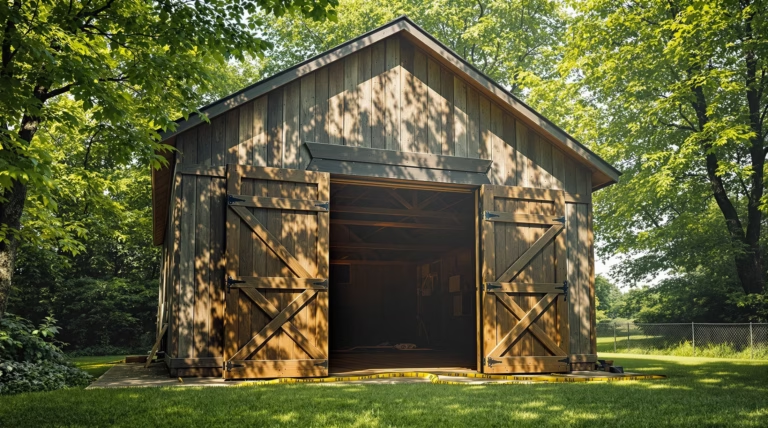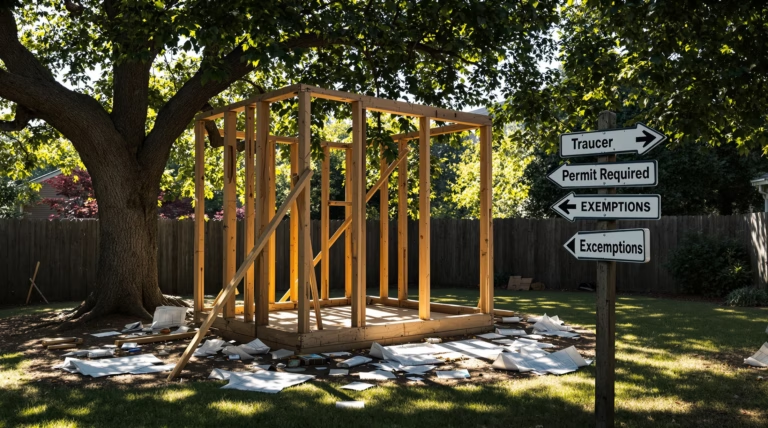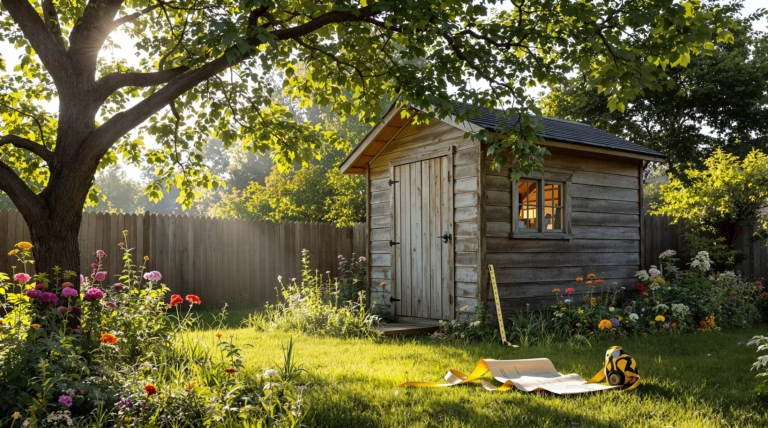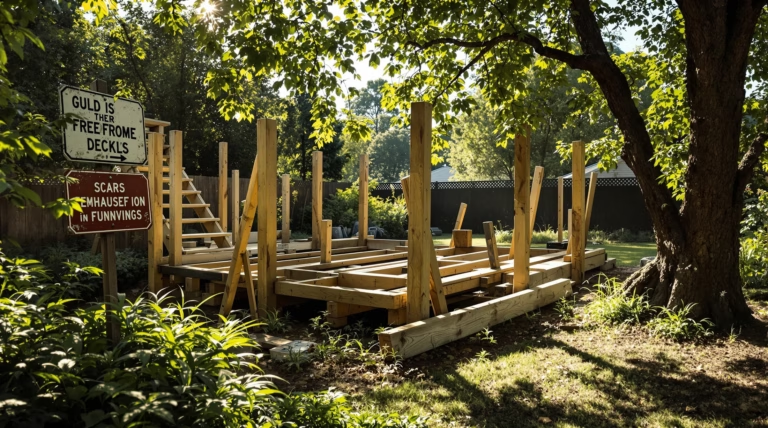How Big of a Shed Can I Build Without a Permit in Texas?
Planning to build a shed in Texas? Before you start your construction project, it’s crucial to understand the local permit requirements to ensure your structure complies with state and local regulations. Let’s explore what you need to know about building permit-free sheds in the Lone Star State.
Understanding Shed Permit Requirements in Texas
In Texas, the general rule allows for building sheds up to 200 square feet in floor area and no taller than 15 feet without obtaining a building permit. This exemption applies to single-story structures primarily used for storage purposes.
While state regulations provide these guidelines, individual municipalities and counties may have different requirements. Local building codes can vary significantly, making it essential to verify specific requirements for your location before starting construction.
General Permit Exemptions for Sheds
Most Texas jurisdictions offer permit exemptions for sheds meeting specific criteria:
- Floor area of 200 square feet or less
- Height not exceeding 15 feet
- Single-story construction
- Primary use for storage
- Proper setback distance (typically 5-6 feet from property lines)
Factors Influencing Permit Necessity
Several factors can affect whether your shed requires a permit:
- Location (front yard vs. backyard placement)
- Flood zone or wetland area designation
- Historical district restrictions
- HOA regulations
- Intended use (storage, workshop, or living space)
- Inclusion of utilities (electrical, plumbing)
How Big of a Shed Can I Build Without a Permit in Texas?
Under Texas state guidelines, permit-exempt sheds must not exceed these specifications:
| Specification | Maximum Limit |
|---|---|
| Floor Area | 200 square feet |
| Height | 15 feet |
| Stories | Single story only |
Size Limitations and Exemptions
The 200 square foot allowance accommodates various practical shed configurations:
- 10×20 feet (200 square feet)
- 12×16 feet (192 square feet)
- 14×14 feet (196 square feet)
Height and Proximity Considerations
Even permit-exempt sheds must comply with specific placement requirements:
- Maximum height of 15 feet from ground level
- Minimum setback of 5-6 feet from property lines
- Appropriate distance from main dwelling
- Clear of utility lines and easements
- Compliance with local proximity regulations
While Texas generally allows sheds up to 200 square feet without a permit, local zoning and building codes can significantly impact your project. The state’s decentralized regulatory system means counties and municipalities often establish their own, more restrictive rules that override state guidelines.
- Property placement restrictions
- Height limitations
- Environmental considerations
- Historical preservation requirements
- Utility easement regulations
Consulting Local Authorities
The most effective approach to ensure compliance is direct contact with your municipal or county building department. These officials can provide definitive information about permit requirements and clarify special considerations for your property.
- Bring detailed plans including dimensions and materials
- Request information about application processes and fees
- Obtain written documentation of requirements
- Access online resources for zoning maps and codes
- Document all approvals and exemptions in writing
Understanding Setback and Height Regulations
| Setback Type | Distance Requirement |
|---|---|
| Side Property Lines | 5 feet minimum |
| Rear Property Line (standard) | 5 feet minimum |
| Rear Property Line (tall structures) | 10 feet minimum |
| Front Property Line | 25 feet minimum |
Height restrictions typically work alongside setback rules, with most jurisdictions limiting structures to 15 feet. However, local municipalities and HOAs may impose stricter limitations. Professional property surveys are recommended to ensure accurate placement and avoid setback violations.
Consequences of Building Without a Permit
Constructing a shed without required permits can result in severe consequences, despite the initial time and cost savings. Violations can lead to substantial penalties, with fines potentially exceeding $50,000 in some jurisdictions.
- Monetary penalties and fines
- Possible jail time for serious violations
- Property liens
- Forced demolition requirements
- Reconstruction costs
- Property devaluation
Legal and Financial Implications
The financial impact extends beyond initial fines to include multiple costly consequences:
- Escalating penalty fees starting from hundreds to thousands of dollars
- Premium-rate retroactive permit charges
- Complications during property sales
- Reduced property value
- Potential insurance claim denials
- Additional HOA penalties and enforcement actions
Ensuring Compliance and Safety
Beyond legal requirements, obtaining proper permits for sheds exceeding Texas’s 200 square foot exemption ensures the structure meets essential safety standards. Building codes exist primarily to protect occupants and neighbors from hazards such as structural failure, fire risks, and weather damage.
- Protection against extreme weather conditions
- Proper structural reinforcement requirements
- Hurricane-force storm resistance measures
- Wind damage prevention standards
- Rainfall and water damage safeguards
Achieving compliance after construction presents significant challenges and increased expenses compared to securing permits beforehand. If authorities discover an unpermitted shed, you’ll face several complications:
- Mandatory retroactive permit applications
- Removal of completed work for inspection access
- Exposure of structural elements, electrical work, and components
- Potential extensive reconstruction requirements
- Additional labor and material costs
- Extended project timeline due to inspections
To avoid these complications, initiate consultation with local building departments before beginning construction, even for structures near the size threshold. Many jurisdictions offer pre-construction consultations that can clarify requirements and identify potential issues before investing in materials and labor.







